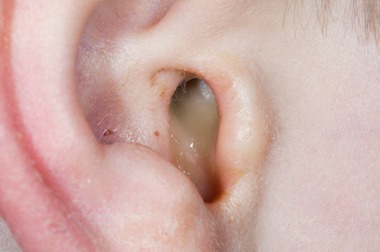

It is the most common bacterial infection during childhood and the most common reason that a pediatrician would write a prescription for an antibiotic. PMID: 33979487.įunding: NIH’s National Institute on Deafness and Other Communication Disorders (NIDCD) and National Center for Advancing Translational Sciences (NCATS).Otitis media is an ear infection. Hoberman A, Preciado D, Paradise JL, Chi DH, Haralam M, Block SL, Kearney DH, Bhatnagar S, Muñiz Pujalt GB, Shope TR, Martin JM, Felten DE, Kurs-Lasky M, Liu H, Yahner K, Jeong JH, Cohen NL, Czervionke B, Nagg JP, Dohar JE, Shaikh N. References: Tympanostomy Tubes or Medical Management for Recurrent Acute Otitis Media. Developing Novel Ear Infection Treatments.No Benefit to Shortening Ear Infection Treatment.

Antibiotics Prescribed More Often During Telemedicine Visits.“We used to often recommend tubes to reduce the rate of ear infections, but in our study, episodic antibiotic treatment worked just as well for most children,” Hoberman explains.Īnother theoretical reason to resort to tubes is to prevent the development of bacterial resistance, Hoberman adds, “but in this trial, we did not find increased resistance with oral antibiotic use.” They also had fewer days with symptoms related to their ear infection, other than drainage from the ear. Children in this group had their first ear infection an average of two months later than those receiving oral antibiotics. This analysis found a small benefit to the surgical approach: there were an average of 1.47 ear infections per child in the surgical group compared to 1.72 among those receiving oral antibiotics.Īlthough the two approaches led to a similar number of ear infections, the team did find some advantages to ear tube placement. Because of these changes, the team conducted a secondary analysis limited to children who remained in their original treatment groups. Of the 129 children assigned to receive ear tubes, the parents of 13 declined surgery. Of the 121 children being managed with oral antibiotics, 54 underwent tube placement during the study-35 because of failure of medical management and 19 at the request of the parent. There were also no differences in the percentage of severe infections or impact on the children’s quality of life. Though the children in the medical management group received more oral antibiotics, the researchers did not find evidence of increased bacterial resistance in their nose and throat samples. The team found no difference in the study’s main measure, the total number of ear infections, between the groups. The children were then followed for two years. They had also received the pneumococcal vaccine. All children had a history of at least three ear infections within 6 months or at least four within 12 months prior to entering the study. Researchers randomly assigned 250 ear infection-prone children, 6 to 35 months of age, to receive either ear tubes and antibiotic ear drops or medical management with oral antibiotics. It appeared in the New England Journal of Medicine on May 13, 2021. The study was funded by NIH’s National Institute on Deafness and Other Communication Disorders (NIDCD) and National Center for Advancing Translational Sciences (NCATS). Alejandro Hoberman at the University of Pittsburgh and Diego Preciado of Children’s National Medical Center looked at whether tubes reduced the rate of ear infection compared with treating each infection with an oral antibiotic. This protects against strains of bacteria that commonly cause ear infections.Ī research team led by Drs. Most were conducted before the pneumococcal vaccine became standard for young children. Studies comparing ear tubes to oral antibiotic treatment for recurring childhood ear infections have had mixed results. This helps to drain fluid and prevent future buildup. For them, doctors may recommend surgery to place a tiny tube in the ear drum, called a tympanostomy tube, to provide ventilation to the middle ear. Some children experience frequent ear infections. But using antibiotics too often can cause bacteria to become resistant, so doctors may wait to see if mild ear infections clear up on their own. This leads to pressure and pain, and can also affect hearing.Ĭhildhood ear infections are often treated with oral antibiotics. Parts of the middle ear become swollen or blocked, trapping fluid behind the ear drum. They occur when bacteria or viruses infect the area behind the ear drum called the middle ear. SolStock / E+ via Getty ImagesĮar infections are among the most common illnesses in U.S. The study compared two approaches to treating recurrent ear infections in children.


 0 kommentar(er)
0 kommentar(er)
